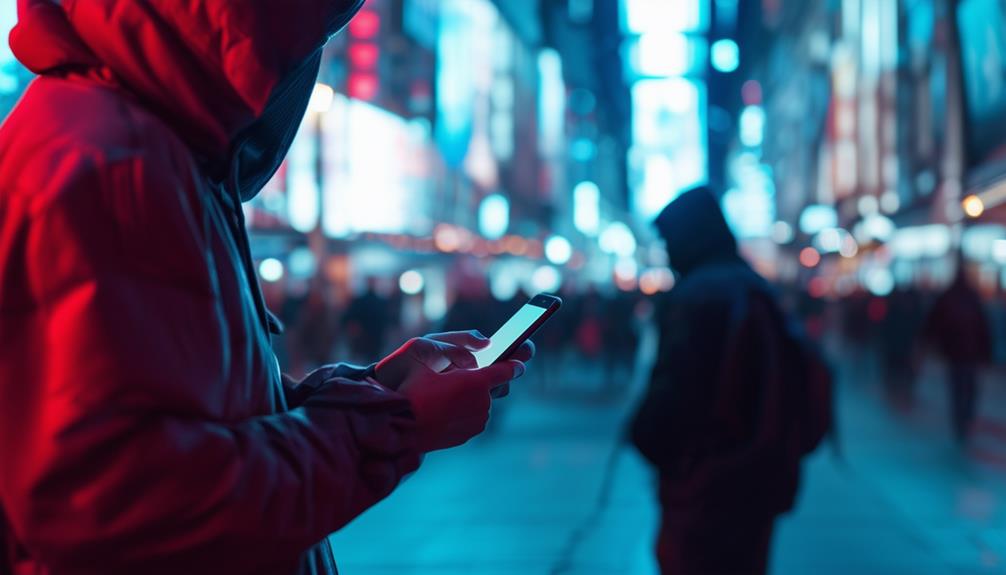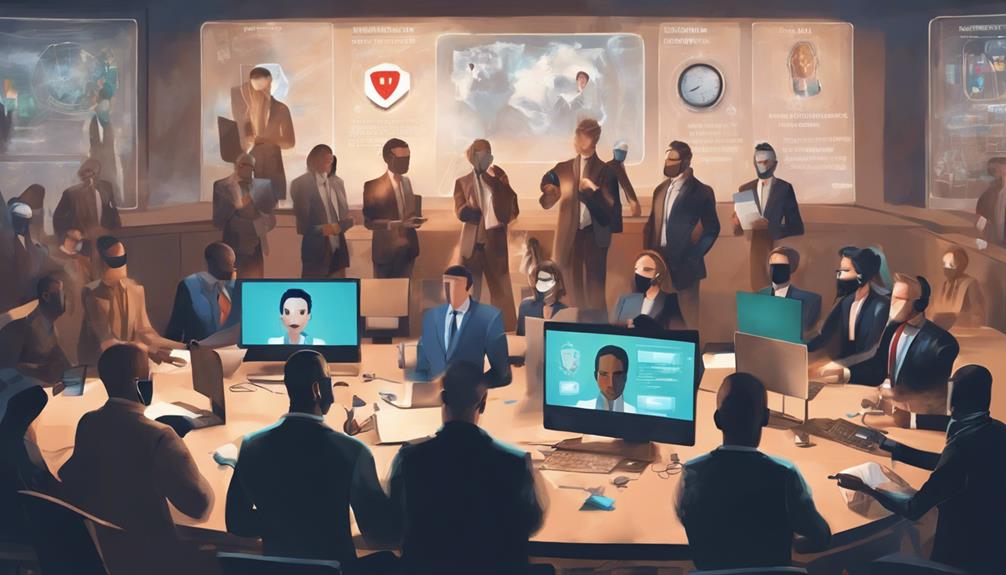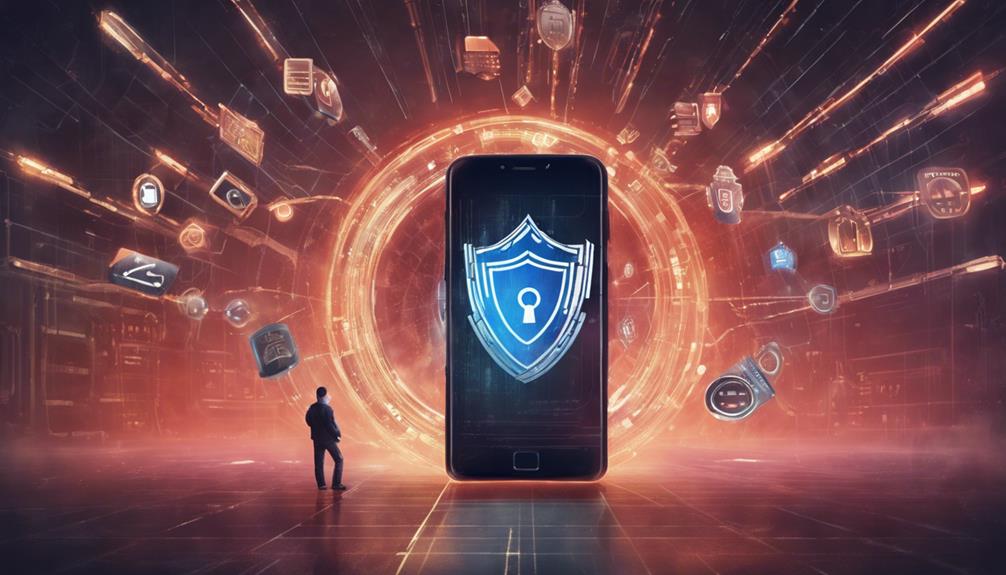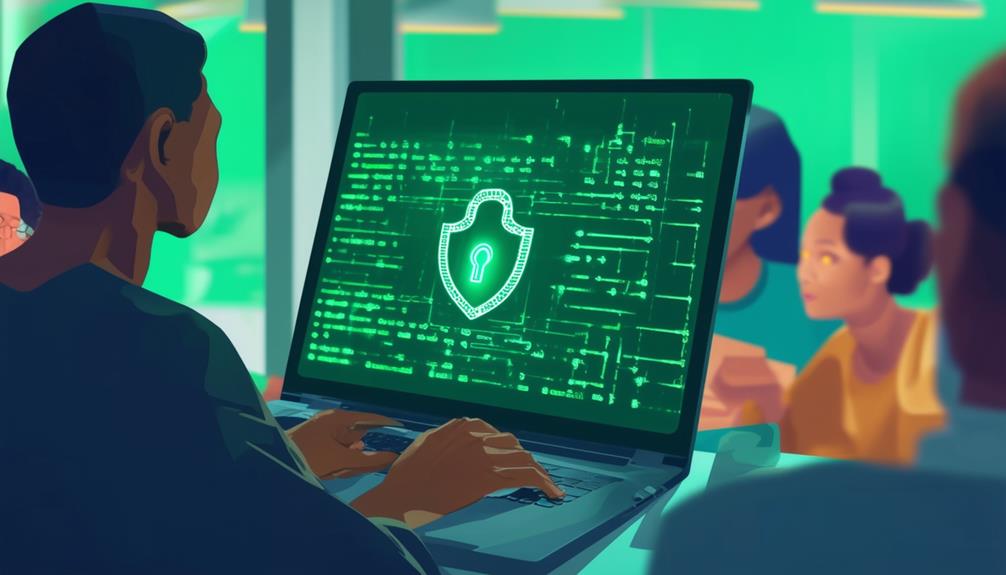Zoom has faced security vulnerabilities like Zoombombing and false claims about encryption, raising concerns about its safety from hackers. Measures like two-factor authentication, waiting rooms, and passcodes enhance protection. Two-factor authentication adds a second verification layer, preventing unauthorized access. Waiting rooms screen participants for added security. Passcodes offer unique meeting protection. End-to-end encryption safeguards privacy during meetings. Admin settings and regular updates strengthen Zoom's security. These precautions help mitigate risks, ensuring a safer virtual environment. Further details on enhancing Zoom security are available for those interested in delving deeper.
Key Takeaways
- Two-factor authentication enhances Zoom security against hackers.
- Waiting rooms screen participants, preventing unauthorized access.
- Passcodes for meetings add an extra layer of protection.
- Admin controls offer security settings customization.
- Regular updates maintain Zoom's security integrity.
Zoom Security Concerns
Numerous security vulnerabilities have plagued Zoom, raising significant concerns about the safety of the platform from potential hackers. The Zoom security issues range from unauthorized access to meetings, commonly known as Zoom-bombing, to false claims regarding end-to-end encryption. These vulnerabilities have exposed users to risks such as eavesdropping, data theft, and even remote device control by malicious hackers. Moreover, the installation of a web server on Mac computers without user consent has intensified privacy and security concerns surrounding Zoom.
To mitigate these risks, users are advised to implement additional security measures such as two-factor authentication, waiting rooms, and meeting passcodes. These precautions aim to safeguard Zoom meetings from potential breaches and unauthorized access by malicious actors.
Moving forward, it is imperative for Zoom to continue enhancing its security features, encryption protocols, and responsiveness to emerging threats to bolster protection against hackers and ensure the privacy and data security of its users.
Common Zoom Vulnerabilities

Several common vulnerabilities have been identified in Zoom's software, exposing users to various security risks and threats. Zoombombing, unauthorized access, and data breaches have been significant issues faced by Zoom. These vulnerabilities have allowed hackers to take control of devices, leading to compromised accounts and data theft.
Additionally, security flaws in Zoom's system have enabled eavesdropping, putting user privacy at risk. It was also revealed that Zoom had falsely claimed to provide end-to-end encryption, raising concerns about the actual level of security offered by the platform.
Furthermore, zero-day exploits have been reported, highlighting the presence of further vulnerabilities that could be exploited by malicious actors. The prevalence of these weaknesses in Zoom's software underscores the importance of addressing and mitigating such vulnerabilities to enhance the overall security of the platform.
Enhancing Zoom Security Measures

Improving the security measures of Zoom can effectively safeguard user data and communications against potential threats and breaches. Two-factor authentication adds an extra layer of protection by requiring a second form of verification during login, enhancing overall security.
Waiting rooms offer the capability to screen participants before allowing them access to meetings, ensuring meeting privacy and safety. Passcodes provide an additional security measure by restricting access only to those with the correct code.
Admins have control over various security settings during Zoom meetings, empowering them to enforce safety protocols and prevent unauthorized actions. Utilizing VPN encryption further secures Zoom interactions by safeguarding data transfers with advanced encryption methods.
Enhanced login security, through measures like 2FA and passcodes, fortifies the protection of user accounts and sensitive information. These combined efforts contribute to enhancing Zoom security, promoting meeting privacy and safety in the digital domain.
Implementing 2FA on Zoom

Improving the security measures of Zoom includes implementing two-factor authentication (2FA) as an essential step in fortifying account protection against potential hacking threats.
- Enhances security by requiring a second form of verification.
- Prevents unauthorized access even with compromised passwords.
Setup involves linking a mobile device or security key.
- Reduces the risk of hackers gaining access to sensitive meeting information.
- A recommended security measure to safeguard Zoom accounts.
Utilizing Waiting Rooms on Zoom

Utilizing waiting rooms on Zoom enhances meeting security by providing hosts with the ability to screen participants before granting access to the main meeting. This feature acts as an additional layer of security, allowing hosts to have control over who joins the meeting, thereby preventing unauthorized individuals from gaining entry.
By leveraging waiting rooms effectively, hosts can greatly reduce the risks of security breaches and potential disruptions during Zoom meetings. The ability to screen participants before they enter the main meeting area provides hosts with the opportunity to verify the identities of attendees and make sure that only intended participants are allowed access.
This proactive approach to meeting security not only enhances the overall safety of Zoom meetings but also instills a sense of confidence among hosts and participants regarding the privacy and integrity of their online interactions. Waiting rooms on Zoom serve as a crucial tool in safeguarding virtual gatherings against potential threats and unauthorized access attempts.
Securing Zoom Meetings With Passcodes

Enhancing the security of Zoom meetings can be achieved by implementing passcodes to prevent unauthorized access by external parties. By utilizing passcodes, users can add an extra layer of security to their Zoom meetings, guaranteeing that only intended participants have access.
Setting up unique passcodes for each meeting is essential as it reduces the risk of hackers guessing access codes and gaining entry to confidential discussions. Passcodes play a pivotal role in protecting sensitive information shared during Zoom meetings from potential cyber threats.
Implementing passcodes is a proactive measure to safeguard against hacking attempts and ensure data privacy for all participants involved.
- Passcodes provide an additional barrier against unauthorized access.
- Unique passcodes for each meeting enhance security measures.
- Protect sensitive information shared during Zoom meetings.
- Safeguard against potential cyber threats and hacking attempts.
- Implementing passcodes is a proactive step towards ensuring data privacy.
Extra Layers of Zoom Protection

Implementing additional security measures can further enhance the protection of Zoom meetings against potential threats and unauthorized access. Zoom's security features, such as two-factor authentication, the waiting room function, passcodes for meetings, admin controls, and the use of a VPN for encrypted communication, provide an additional layer of security to guarantee secure meetings and safeguard against hackers.
| Zoom Security Features | Description | Benefits |
|---|---|---|
| Two-factor Authentication | Enhances account security by requiring additional verification. | Secure access for meeting participants. |
| Waiting Room | Allows hosts to screen participants before granting access. | Prevents unauthorized entry. |
| Passcodes | Adds a layer of protection to meetings, enhancing privacy. | Ensures only invited participants join. |
| Admin Controls | Enables administrators to set security settings for meetings. | Ensures a safe and secure virtual environment. |
| VPN Usage | Provides encrypted communication, protecting against hackers. | Adds an extra layer of security to Zoom meetings. |
Ensuring Zoom Safety Against Hackers

To guarantee the safety of Zoom meetings against hackers, encryption plays a vital role in safeguarding data integrity and confidentiality.
Regularly reviewing security settings within Zoom can help users maintain control over who can access their meetings and make sure that sensitive information remains protected.
Encryption for Zoom
Zoom's utilization of AES 256-bit encryption plays a pivotal role in strengthening the platform against potential hacking threats. This robust encryption method guarantees data protection and secure communication, making it challenging for hackers to intercept sensitive information.
Some key encryption features in Zoom include:
- End-to-end encryption: Enhances privacy during meetings, safeguarding against hacking attempts.
- TLS encryption: Provides an additional layer of security for data transmission.
- Two-factor authentication: Prevents unauthorized access by requiring an extra verification step.
- Data protection for recordings: Encryption tools secure locally stored data, minimizing the risk of breaches.
- Advanced Chat Encryption: Safeguards communication within Zoom meetings, reducing the likelihood of hacking incidents.
Security Settings Review
Security settings play an essential role in fortifying Zoom against potential hacking threats, ensuring the platform's safety and integrity. By implementing key measures such as two-factor authentication, waiting rooms, passcodes, admin controls, and regular software updates, users can greatly enhance the security of their Zoom meetings.
To further illustrate the importance of these security settings, the table below outlines the main actions users can take to protect their Zoom sessions:
| Security Setting | Description | Benefit |
|---|---|---|
| Two-Factor Authentication | Adds an extra layer of security by requiring a secondary verification method for account access. | Heightened protection against unauthorized access. |
| Waiting Rooms | Allows hosts to screen participants before admitting them to the meeting, reducing the risk of unauthorized users joining. | Enhanced control over meeting attendees. |
| Passcodes | Secure meetings with unique passcodes to prevent unauthorized access and strengthen privacy protection. | Increased privacy and resistance against hackers. |
Frequently Asked Questions
Can You Get Hacked via Zoom?
Zoom meetings may be vulnerable to hacking, leading to unauthorized access. Implementing security measures like passwords, waiting rooms, and two-factor authentication can enhance protection. Regular software updates and safe meeting practices are vital for preventing hacking incidents.
Is Zoom Really a Security Risk?
Zoom's security remains a concern due to past incidents of unauthorized access and data theft. While improvements like two-factor authentication enhance security, vulnerabilities persist. Users must remain cautious and implement additional precautions to mitigate risks effectively.
Can Zoom Be Trusted?
Zoom can be trusted as it continuously improves its security measures, including end-to-end encryption and regular updates. Users can enhance safety by enabling features like two-factor authentication. Vigilance and adherence to best practices are essential.
Can You Get Malware From Zoom?
Utilizing compromised Zoom clients or downloading fake Zoom apps can expose users to potential malware infections. Vigilance is essential to safeguard against malware risks associated with Zoom, highlighting the importance of addressing security vulnerabilities promptly.
Conclusion
To sum up, implementing enhanced security measures such as 2FA, waiting rooms, and passcodes can greatly improve the safety of Zoom meetings against potential hackers. By adding these extra layers of protection, users can guarantee a more secure and confidential online communication environment.
It is important to stay vigilant and proactive in safeguarding sensitive information during virtual interactions. Remember, a fortified defense is key in warding off unwanted intruders in the digital domain.









